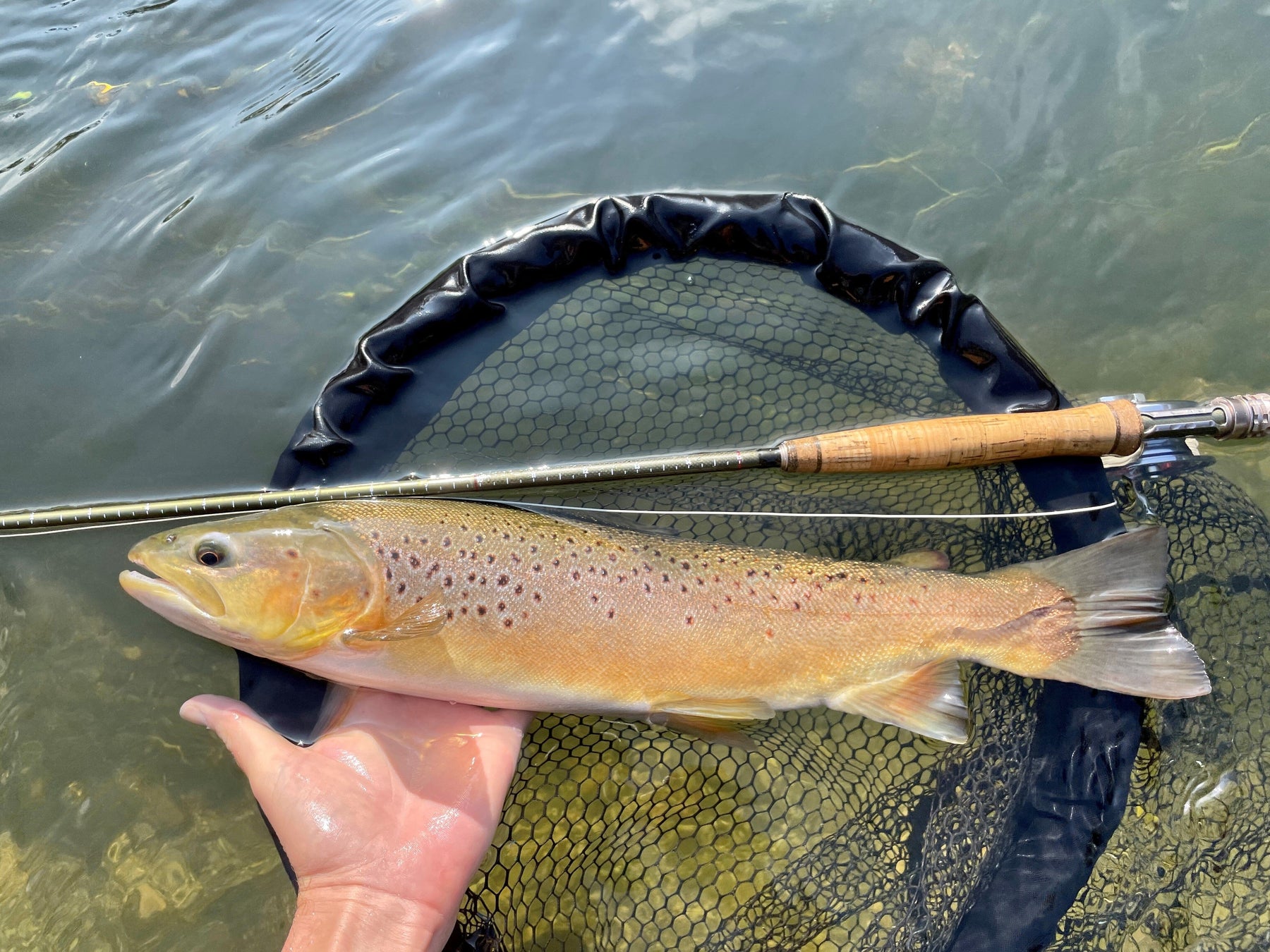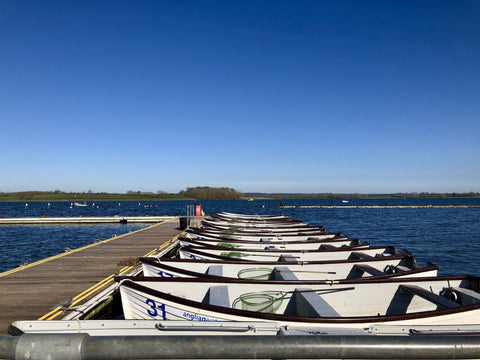
Summer Fly Fishing Tactics For Trout
As we experience record high temperatures in the UK this month, the Trout fishing has severely suffered with many still waters temporarily closing to protect the fish during this stressful period. But as temperatures stabilise, the milder summer months can provide some excellent sport - if you can get your tactics right. This months Upavon blog features the top advice from our experienced consultant team covering all freshwater environments and a variety of techniques to help you catch more fish. If you enjoy this article please subscribe for more.
UK Reservoirs - Tim Joyce
Depth is the key during hot weather. Trout are very susceptible to oxygen deprivation and as the surface layers of your lakes begin to warm the fish will seek those deeper cooler areas or areas that are mechanically oxygenated. Once you have identified the deep, oxygenated water it’s a case of getting your flies and keeping them at depth for as long as possible. A top tip is to look for jumping fish at this time of year, this is a classic sign of heat stress as they launch themselves up through the depths.
My favourite approach from a boat at these times is a high density shooting head line; the Airflo 40 plus range are great especially a Booby Basher type line coupled with a relatively short 12ft leader of 8lb fluorocarbon. I will usually set up with 3 flies, a booby on the point either a cat or blob booby and a couple of black buzzers on the droppers. A nice long cast and let the line sink just keeping up with it with a slow figure of eight retrieve. As the line swings vertically under the boat this is the take zone and where your line markers really come into play. I like to mark my high density lines at 30ft, 20ft and 10ft. Each time a marker comes into the rod rings I will give the line a long smooth draw and then hang it for as long as I can. Takes on this method are very aggressive and can often make you jump as the rod simply buckles over!

Small Still Waters - Tim Joyce
My small water approach is a little different as the lakes tend to be much shallower and the fish far more heat affected. This stops the trout from feeding as they don’t have enough oxygen to properly digest food. I favour the indicator for this. Again identify your deep areas and try and set your leader to fish 10ft deep or more if you can 8lb fluorocarbon with a single dropper 18inches above the point a small size 10 sunburst blob as your point fly and again a single size 10 black or crisp packet buzzer on the dropper. Patience is the name of the game but by suspending your flies in this zone you will eventually bump into a fish or two as they sulk in the deeps.

Rivers - Stanton Jack
A key to successful outings in Summer river fishing is knowing where to put that fly. Look for highly oxygenated water where fish will hold until water temps cool in the evening. The top of runs where the faster water hits boulders or indentations on the bottom creating turbulence is always a good place to start. Usually a dark tan nymph cast just upstream will entice the opportunistic trout. Allow the fly to sink and flow at the current speed. Give a slight lift at the end of your drift which suggests an emerging nymph, take two steps down and repeat the process until you’ve reached the slower water at the end of your run.
N.American Stillwaters - Stanton Jack
Summer fishing in lakes is usually a time of day game. Mornings and evenings fish will hold in shallower water such as reeds and shoals. Here most of our presentations on dry, midge tip, and intermediate lines work well. As the day progresses and the sun is above the water, the fish will usually move to the deeper parts of the lake. Here fast sink lines and deep line suspension tactics with indicators can work well. Foam presentations on type 3-7 sink lines such as Fabs, Boobies, and Foam Dragons can be great paths to success. A nymph or leech suspended under an indicator and wind drifted over the bottom of a shoal is also a good tactic to try.

Time & Place - Ben Worley
If you have the luxury of having accessible fishing nearby and flexible work/life balance then the best option during the summer months is to pick the best time and conditions to get onto the bank. I will tend to wait for overcast periods or just after light rain to help combat the bright sun and clear water conditions that put Trout off the feed. If not possible, then the first 3 hours and last 3 hours of daylight are the best opportunities to enjoy some good sport while the sun appears or drops below the horizon. Location is equally important. I'll often visit areas of the river which are more overgrown and have lots of bankside trees. I'll avoid the well-maintained mown garden chalk stream beats and opt for some tricky casting conditions that will deliver better results. The same applies for still waters, where targeting shaded areas throughout the day will reap rewards and you don't need to cast to the horizon to get them.

Finally...
Please remember, while we can still enjoy some excellent sport in the summer we must always ensure that we use sunscreen, cover our skin and drink plenty of fluids. Isotonic or drinks containing electrolytes will help replace lost salts and prevent headaches too. We must also pay attention to fish care when catch and release is practised, fish mortality is significantly higher in the hottest months and as anglers we should do our best to preserve stocks for another day.
Here's our top tips for responsibly releasing fish in the summer months:
- Keep them wet. Where possible release in the net or handle with wet hands, try using barbless hooks or forceps/release tools to avoid contact.
- Fight them hard. Overplaying fish can send them anaerobic and result in death in low oxygen conditions. Play the fish as hard as your gear will take to get them netted quickly.
- Recovery. Before releasing the fish give them time in the net or supported by your hands, point them into the flow and belly down waiting for them to kick themselves away. Rod holders are really useful to free your hands for proper handling.
- Trophies. If you catch a trophy fish, consider measuring it with a Rod Ruler or similar to avoid removing it from the water for weighing.

Thank you for reading, please consider subscribing for more articles and follow our team members Tim and Stanton here.
If you enjoyed reading this article maybe also try Beginners' Guide to Stillwater Dry Fly Fishing or Barbed vs Barbless - Is It Time To Make The Switch?
Upavon Fly Fishing are a UK based retailer and manufacturer, please visit our online store to discover Upavon’s unique products.
Leave a comment